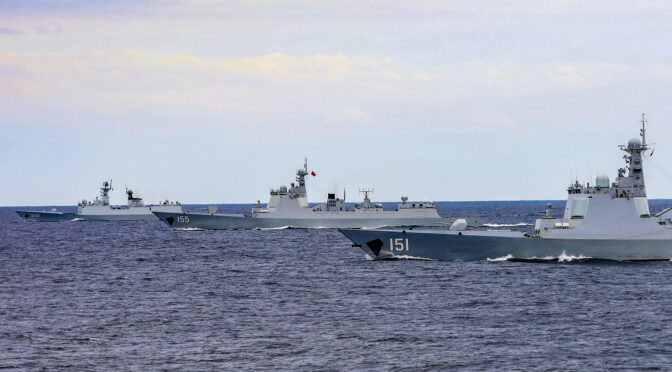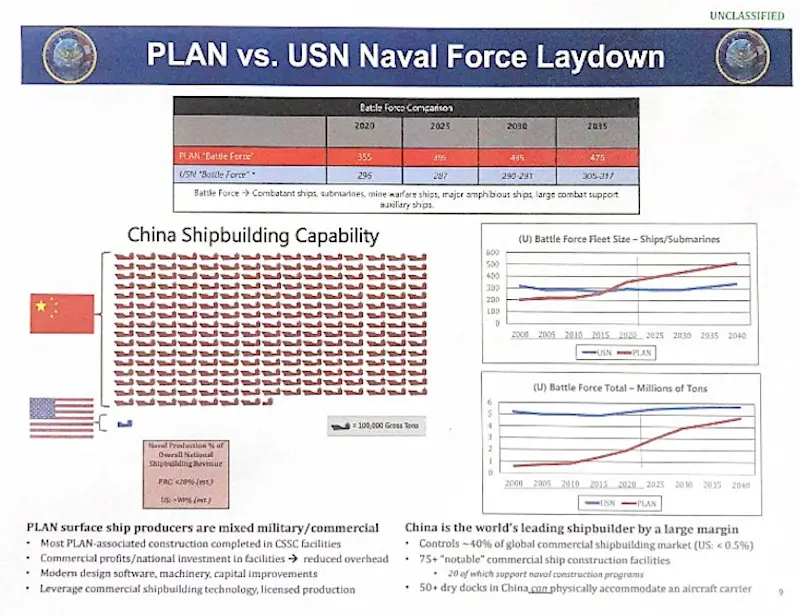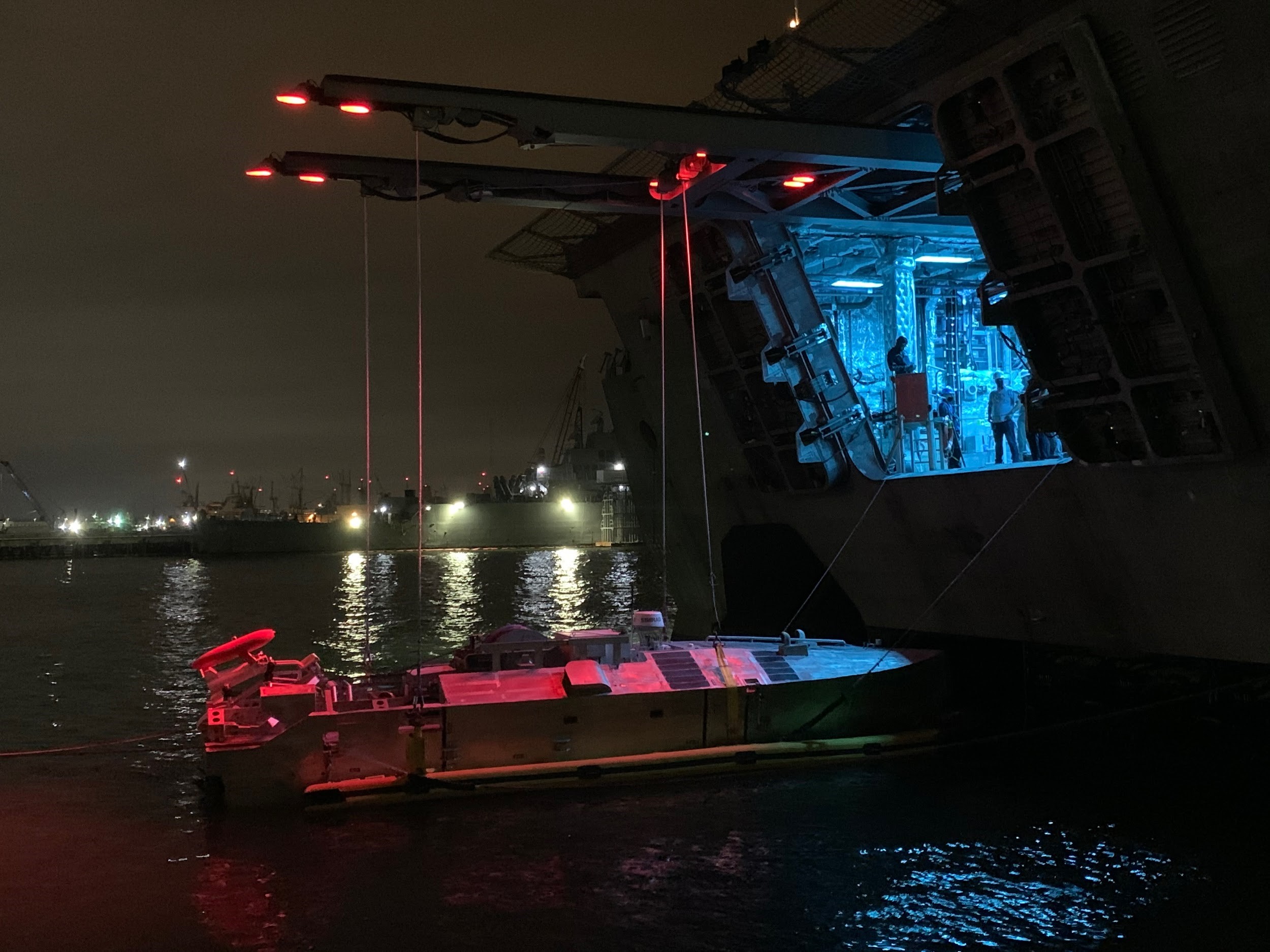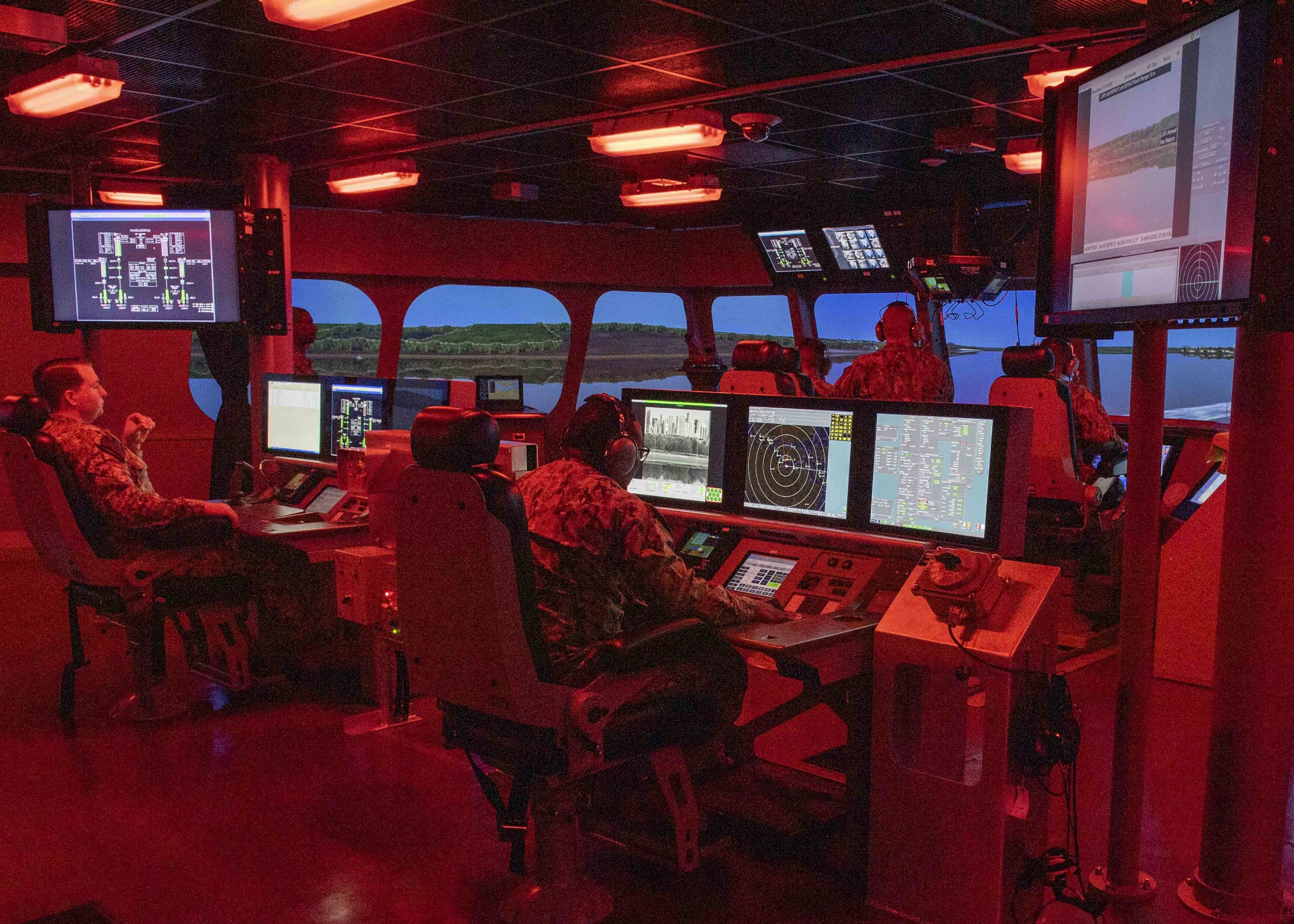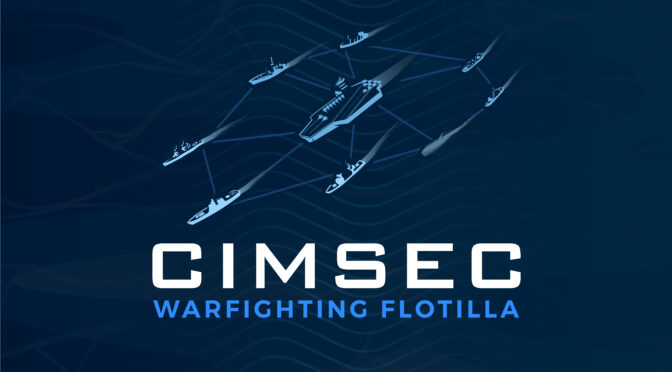By Christopher Nelson
Can we reform the Department of Defense and the Navy? In their new book, American Defense Reform: Lessons from Failure and Success, Admiral Dave Oliver (ret.) and Dr. Anand Toprani make a spirited argument that, yes, we can.
But it won’t be easy. Oliver and Toprani outline four key disruptive historical events in the Navy—the 1940s Revolt of the Admirals, the McNamara Revolution in systems analysis, the fallout from the Vietnam War, and the end of the Cold War. From these events, the authors note that reform in the Navy and the Defense Department will require collaboration among Congressional members, the White House, the Department’s senior uniformed and civilian leaders, and collaboration with industry and the private sector. In this conversation, the authors discuss their new book along with a wide range of topics, including the future of the Navy, its good and bad leaders, thoughts on Admiral Hyman Rickover, and useful reading recommendations.
How did you two meet and develop the idea for this book?
and develop the idea for this book?
We met during a series of Naval War College discussions regarding the future of the U.S. Navy. We quickly found we had a compatible background. Dave had served six tours in the Pentagon and been a political appointee and corporate leader. Anand was an historian with special interest in naval history after World War II. Both of us wanted to understand why imposing change on the military had not worked in the past. Since the naval services – the Navy and the Marines – operate in all of the major domains of war (air, land, and sea), we wondered if it might not well serve as a microcosm of understanding the challenge of managing the defense establishment.
We postulated that a review of what the Navy did well or poorly during three major fiscal challenges since 1945 – the end of World War II, the Vietnam War, and the Cold War – might disclose best practices and point to a way ahead for leaders who wanted to embark upon major changes of the Department of Defense. At the same time, we recognized we could not limit our analysis to the past – we needed to examine the strengths and weaknesses of the various contemporary actors who might push change, such as political appointees, Congress, and the private sector.
Historians regularly rank U.S. Presidents. So, if you were to argue for your top two or three men who were the Secretary of Defense and the top two CNOs, who are they and why?
This query gets at why we were able to produce such a strong book. Because we had strong and sometimes divergent viewpoints that we only reconciled after additional research and discussion, our book ends up reflecting the best attributes of our varied experiences as a practitioner, on the one hand, and a scholar, on the other.
To address your specific question, Anand believes that Forrest Sherman was probably the most skilled CNO of the post-WWII era. He was a bona fide strategic thinker and a skilled bureaucratic operator. He repaired the damage of the “Revolt of the Admirals” with Defense Secretary Louis Johnson and saved naval aviation even before the Korean War began. Finally, he secured the construction of the Forrestal class of supercarriers but had the presence of mind not to feud with the Air Force by constructing the carriers in such a way as to launch long-range nuclear strikes.
Dave interviewed or worked with Arleigh Burke, George Anderson, Dave McDonald, Elmo Zumwalt, Jim Watkins, Carlisle Trost, Frank Kelso, Mike Boorda, Jay Johnson, and Vern Clark. Of these extraordinary men, he has long placed Zumwalt and Kelso in the front rank, for reasons that we make clear in our book.
Just as with CNOs, Dave and Anand have different views about what makes an effective SECDEF. Anand is convinced that the smartest SECDEF hands down is Harold Brown. He didn’t revolutionize how the Pentagon operated, but he did make many of the technological investments that the Reagan Administration exploited a decade later. Moreover, despite his brilliance, he was open minded about alternative viewpoints, provided his critics made a strong argument. For example, when the Navy pushed back against the idea that it should play only a supporting role in the defense of Europe, Brown gave his SECNAV, Graham Claytor, the authority to commission a study questioning OSD’s assumptions. He also came around to the need for a more proactive naval policy by the end of the Carter Administration. Finally, Brown recognized the essential fact that you cannot run defense like a business, and that a certain inefficiency is the price we pay for living in a democratic society.
Dave worked for and knew Mel Laird, Dick Cheney, Les Aspin, Bill Perry, Bill Cohen, and Donald Rumsfeld. He has long been impressed with the many accomplishments of Bill Perry and hope that future scholars will explore discontinuity between Dick Cheney’s performance as Secretary of Defense and his service as Vice President.
And the two or three worst?
People do their best, and few people leave the Pentagon with their reputations enhanced. That said, Anand thinks that Caspar Weinberger misunderstood his role. Weinberger appeared to see his job as being an advocate for higher defense budgets and was desperate to avoid the taint of being “another McNamara.” Consequently, Weinberger failed to exercise leadership by asking why the services were making their specific budget choices, and whether each service’s decisions complemented those of the other services. Consequently, one can make a good case that the country did not get the return on investment it deserved during the 1980s.
Dave believes that an extraordinary book is still waiting to be written that explains why a man with all of Donald Rumsfeld’s experience, charisma, intellect, and charm was unable to lead the Department of Defense.
Who was William Edwards Demming? How did he influence Admiral Kelso’s leadership style?
Demming was the statistician and engineer who went to Japan and provided the Japanese with guidance (Total Quality Management) that was vital to the reconstruction of their shattered industrial sector. He then returned to the United States to espouse the same principles to U.S. industry, but found few takers at a time when U.S. firms were globally dominant and saw little need to innovate. Nevertheless, Demming’s principles were consistent with the precise demands of nuclear power that Hyman Rickover was espousing. When Total Quality Management was combined with the concept of Six Sigma originated by Bill Smith (most famously of Motorola), certain sectors of American industry took an enormous surge forward. (This is discussed at some length in Dave Oliver’s Bronze Rules, Annapolis: Naval Institute Press, 2021, pgs. 145-152.)
The impact of these three men – Demming, Rickover, and Smith – on American industry during the last century cannot be overstated. That said, Demming and Smith’s concepts were intended to guide aid in the production of manufactured items and have only a peripheral application to defense matters. Admiral Kelso may have overhyped the potential impact of Total Quality Management, but it is impossible to make an accurate judgment since this imitative was overtaken by the Tailhook scandal, which consumed the Navy after 1991.
I really enjoyed the second part of the book titled “What is to be done and by whom?” You synthesized and compiled a lot of information about what doesn’t work well in the DoD across the private sector, Congress, and appointed officials. As for the length of, say, a flag officer’s time in a particular billet, do you think we should keep them in a job for longer than two years? Did we rotate as often and as quickly in the WWII era and Korea through Vietnam as we do today? Or less?
We don’t know the answer. Whether senior naval leaders should spend more time in specific billets is a matter for debate, but there is no doubt that the sum of their experience as operators, bureaucrats, and leaders far exceeds that of people from outside of the defense enterprise.
The MRAP is a fascinating case study on getting something done and done quite quickly. Personality (SECDEF Gates) and process seemed to meld. Gates demanded bi-weekly meetings I believe. He made it his highest priority. Absent a war or something else that drives national attention, for a bureaucracy the size of ours, is this the best we can hope for among the thousands of decisions, distractions, and other priorities? That is, prioritization matters. And some things – or many things – are not going to get solved.
The MRAP story is not black and white. While many believe it took senior direction to get the MRAPs because of problems in the acquisition system, the real problem was one of requirements – that is, the senior Army and Marine officers did not want to buy the MRAPs. Their experience and analysis told them that, as soon as the United States was out of Iraq, their investment in the MRAP would be wasted, and the military would suffer long-term damage because of the misallocation of resources to a program that, while saving lives, yielded no strategic benefit. These officers were out of synch with the Bush II Administration. The President wanted regime change in Iraq, and he did not want to acknowledge that the war was a political and military mistake, which made him deaf to recommendations to change course.
At the end of the Iraq War, the military leaders who slow-rolled the MRAP proved correct as nearly all of the MRAPs, purchased at great cost, were abandoned in place in Iraq, and the United States failed to achieve its political objectives. At the same time, far too many service personnel suffered grievous injuries or worse from improvised explosive devices. There are no heroes or villains, but perhaps a more honest discussion of the war between civilian and military leaders would have allowed the United States to mitigate the long-term damage of the Iraq War.
Are we done with the age of an Admiral Rickover? A singular juggernaut by sheer force of will that can create an entire military culture that lives on for decades?
In our book we use the example of nuclear-powered submarines to show how difficult it is for each of the services to recognize technological innovation that threatens their existing culture and hierarchy.
When we think about Admiral Rickover’s legacy, we focus on nuclear-powered carriers and submarines that have set an unparalleled standard of safety by never having a reactor accident, and we recognize the importance nuclear-powered vessels play today to performing vital naval and national security missions. What we forget is that Rickover needed incredible support from political and military leaders, starting with President Truman, whose initials were welded on the hull of USS Nautilus, President Eisenhower, whose wife launched Nautilus, and Admiral Burke, who supported both Rickover and the Office of Special Projects that developed the Polaris missile within the Navy.
Admiral Rickover was innovative, brilliant, and hardworking – a true American original. That said, he would never have been able to make the progress he did if it were not for 40 years of unwavering support from the support from the Oval Office, Congress, and the naval leadership.
You each get to change the current DoD Planning, Programming, Budgeting, and Execution process. What would you do?
We believe PPBE gets a bad rap, largely because of the association with McNamara and because, as we discuss in our book, the average observer does not realize that each service does the process differently. We probably should make modifications to speed up the process, which generally takes two years to just plan and program each budget before the White House submits its budget to Congress. That said, at its essence, PPBE is a process that tries links budgetary choices to national objectives. The alternative appears to be allowing the services to create their own wish lists without reference to what the Administration and Congress believes is necessary or what the other services are doing.
We think if you want to make meaningful changes, you have start with the requirements and acquisition processes – i.e. deciding what you need and what you will buy. If you get those two questions wrong, no amount of budget wizardry during PPBE is going to save you from the consequences of poor choices made at the start of the process.
Today, how would you characterize the morale of the DoD civilians and military members you regularly come in contact with? Are they frustrated with some of the issues you’ve raised in your book?
The United States is fortunate to have so many gifted entrepreneurs interested in contributing to national defense. A great number of them, particularly from startups and tech, are justifiably frustrated with how slow the process is to adopt new weapons. The problem is that they have very little understanding that the obstacles against which they struggle are the result of Congressional limitations. Fundamentally, too few people from the private sector share Harold Brown’s realization that the military is answerable to the American people rather than stockholders and cannot simply operate like a private firm.
How would you propose we build or mentor a politically astute officer?
An investment in education would probably help. There simply isn’t time to create such officers in PME, and the quality control is also lacking. Anand is struck by the contrast and influence of the well-educated officers the Navy had in the 1970s and 80s. The Navy made a conscious decision to educate a “Fletcher mafia” among gifted line officers and then send them to specific offices in OPNAV – the same goes with the Strategic Studies Group (SSG) alumni. These same officers then went on to major command and many become flag officers. Ultimately, cultivating defense intellectuals among the officer corps requires considerable expenditure of time and money. Hoping they will find time to develop intellectually in their spare time only make sense if you have made the initial investment to develop the appropriate aptitude and skills.
For each of you, what are three books you recommend to readers after they have picked up your book? Or any books you think anyone working in the DoD should read today in light of our current challenges?
There are two classics we would recommend. The first is Alain Enthoven’s classic, How Much is Enough, to figure out how to reconcile quantitative and qualitative methods of making defense choices. As we discuss in our book, Enthoven and his fellow “Whiz Kids” always claimed analysis was only a tool for aiding judgment, but they failed miserably to create a productive discourse with their military counterparts.
The second book everyone should read is Graham Allison’s Essence of Decision. Although the subtitle of the book is Explaining the Cuban Missile Crisis, it has limited utility for illuminating that particular historical event now that most of the relevant U.S. documents, and even some of the Soviet and Cuban records, are declassified. Rather, the greatest strength of Essence of Decision remains Allison’s analysis of how important decisions are made in our national security establishment, particularly his model of “bureaucratic politics.”
Are you optimistic or skeptical that we see any consequential defense reforms for the better in the next 5-10 years?
Andy Marshall created the discipline of Net Assessment because he wanted the United States to make different choices without the external stimulus of a military disaster or defeat, which is the usual way militaries embrace innovation. Marshall wanted Americans to rethink what they needed and why rather than simply wasting money replicating existing forces whose utility might have declined. Marshall first made his case back in the 1970s, and by the 1990s, he realized few people in positions of responsibility were listening, which contributed to the gradual irrelevance of the office he established in the Pentagon.
The premise of our book is that at some point in time the nation will decide it needs to rebalance or even reshape the defense establishment. This may be because we reach some limit on resources (fiscal, technological, human, etc.), or it may be because of a reconsideration of the threat. Whatever the reason, inspiring lasting change within a complex social organization – whether a bureaucracy, a private firm, or even a military service – is anything but easy, particularly when the entity has been spared the worst consequences of poor decisions for too long. That is precisely the time, we argue, to remember that it is less costly to learn from other people’s mistakes than to make your own. We still believe the country can learn from its history, and our leaders should know the relevant information when making their decisions.
Dave Oliver is a retired admiral who also served in the Pentagon for Presidents Clinton and Bush, and spent more than a decade in the defense industry. He was one of the founding members of the American College of National Security Leaders.
Anand Toprani is an Associate Professor of Strategy and Policy at the U.S. Naval War College.
CDR Christopher Nelson is a career intelligence officer, graduate of the U.S. Naval War College, and regular contributor to CIMSEC.
All views are presented in a personal capacity and do not necessarily reflect the official views of the U.S. Navy or Department of Defense.
Featured Image: The Pentagon, headquarters of the Department of Defense. (Department of Defense photo by Master Sgt. Ken Hammond, U.S. Air Force)


